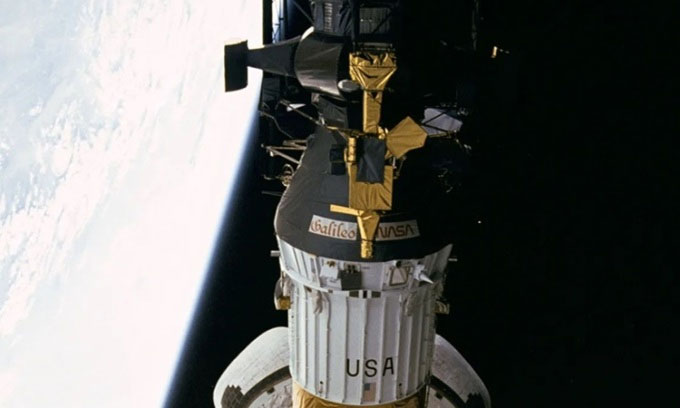Mysterious anomaly affects spacecraft
Until now, scientists have not been able to explain the phenomenon that causes the difference between the expected motion and the recorded motion when a spacecraft flies by a planet.
On December 8, 1990, NASA's Galileo spacecraft experienced a "cross-body anomaly" as it flew past Earth on its way to Jupiter and its moons. The anomaly has been recorded by several other spacecraft since then and remains an unexplained mystery to this day, according to IFL Science .

NASA's Galileo probe. (Photo: NASA).
In its missions to explore celestial bodies in the Solar System, NASA often uses " gravitational assists." This is a technique in which spacecraft use relative motion and the gravity of planets or other celestial bodies to change direction and increase speed, while reducing costs and saving propellant. Essentially, the spacecraft "borrows" some of the momentum from the planet or star. Some spacecraft automatically use gravity assists to reach their targets.
Voyager 2 launched in August 1977 and flew past Jupiter to explore and gain speed on its way to Saturn, according to NASA. Voyager 1 launched in September of the same year and reached Jupiter before Voyager 2. Voyager 2 then used boosters from Saturn and Uranus to fly to Neptune and beyond. Galileo relied on boosters from Venus and Earth as it circled the sun on its way to its target, Jupiter. Cassini borrowed boosters from Venus twice, once from Earth and once from Jupiter, to build up enough momentum to reach Saturn.
NASA uses gravity assists around Earth quite a bit. Analyzing six flybys by Galileo, NEAR, Cassini, Rosetta, and MESSENGER, researchers found several unexpected accelerations in the spacecraft from these operations. They found an unusual energy shift during these flybys , though they couldn't find a clear cause or systematic error behind it. The team thinks the effect is related to Earth's rotation. However, they haven't ruled out other causes, from relativistic effects to a dark matter halo around Earth.
The issue is further complicated by the fact that some spacecraft, including Juno, did not encounter anomalies while using gravity assists, suggesting there are exceptions and that more data from future flybys is needed to conclude.
In 2013, Stephen Adler, a particle physicist and professor emeritus at the Institute for Advanced Study in Princeton, proposed a model of the Earth as being encased in two shells of dark matter. According to his theory, the acceleration and deceleration of spacecraft are due to the elasticity and inelasticity of the two shells. He predicted that NASA's Juno spacecraft would fly by Earth in October 2013 with a velocity that deviated by 11.6 millimeters per second from its predicted speed. However, Juno's journey to Jupiter did not deviate from its original calculations. Adler said this example helps to rule out the hypothesis that dark matter affects the velocity of spacecraft. Instead, he suspects that the speed differences of some previous spacecraft were the result of errors in the measuring equipment.
- The mysterious spacecraft X-37B has returned to Earth
- The mysterious American spacecraft returns to Earth
- The source of the bewildering knock on Chinese spacecraft
- NASA spacecraft discovered anomaly in oxygen on Mars
- The mysterious ship x-37b is about to return to earth
- Assumption about the mysterious mission of the X-37B
- The mysterious American X-37B aircraft returns to space
- NASA ships detected this anomaly near Earth's atmosphere
- A mysterious missing American spacecraft
- Google finds alien ships falling to Earth?
- The 7th grade student group discovered a mysterious cave on Mars
- Video: Mysterious object illuminates the night sky in Russia
 Van Allen's belt and evidence that the Apollo 11 mission to the Moon was myth
Van Allen's belt and evidence that the Apollo 11 mission to the Moon was myth The levels of civilization in the universe (Kardashev scale)
The levels of civilization in the universe (Kardashev scale) Today Mars, the sun and the Earth are aligned
Today Mars, the sun and the Earth are aligned The Amazon owner announced a secret plan to build a space base for thousands of people
The Amazon owner announced a secret plan to build a space base for thousands of people